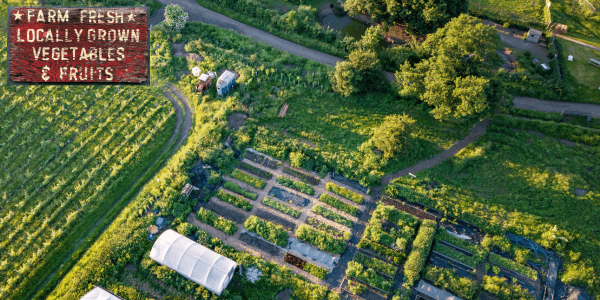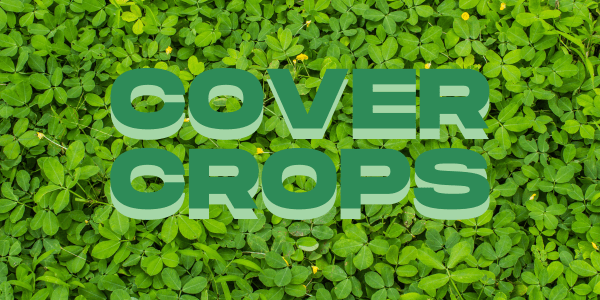In a world searching for healthier food and a healthier planet, organic farming stands out not as a new trend, but as a return to a wiser, more harmonious way of working with the land. It’s a holistic approach that rejects synthetic chemicals and embraces the complex, living systems of nature to produce abundant, nutrient-dense food.
This isn’t just about what you don’t use (like synthetic pesticides and fertilizers); it’s about what you do use: compost, cover crops, biodiversity, and a deep understanding of the soil. This guide will walk you through the core principles of organic farming, providing a foundational understanding for anyone looking to grow food in a way that nourishes both people and the planet.
What is Organic Farming? The 3 Core Principles
Organic farming is a philosophy built on a few key principles that work together to create a self-sustaining, resilient ecosystem.
- Feed the Soil, Not just the Plant: This is the most important principle. Instead of feeding plants with synthetic, water-soluble fertilizers, organic farming focuses on building a deep, rich, living soil. A healthy soil, teeming with billions of microorganisms, fungi, and earthworms, will provide the plants with a steady, slow-release diet of all the nutrients they need to thrive.
- Work with Nature, Not Against It: An organic farm is an ecosystem. This principle involves using natural processes to your advantage. This means encouraging beneficial insects to control pests, using diverse plantings to confuse and deter diseases, and building a system where all the parts work together in harmony.
- Promote Biodiversity: Nature abhors a monoculture. Planting a wide variety of crops, flowers, and trees creates a more stable and resilient environment. Biodiversity provides habitat for pollinators and beneficial predators, improves nutrient cycling in the soil, and reduces the risk of a single pest or disease wiping out your entire crop.

A diverse organic farm teems with life, mixing flowers and vegetables to support a healthy ecosystem.
Getting Started: Practical Steps in Organic Farming
Transitioning to organic methods is a journey of observation and learning. Here are the foundational practices to get you started.
Build Your Soil: The Foundation of Everything
Healthy soil is the heart of an organic system. The goal is to increase its “organic matter”—the decomposing plant and animal material that gives soil its rich, dark color and spongy texture.
- First, Understand Your Soil: Before you can improve your soil, you need to know what you’re starting with. Simple DIY soil tests can give you a good idea of your soil’s texture and pH level. For more detail, send a sample to a local cooperative extension for a full report on its nutrient levels. This knowledge is power.
- Composting: This is the single most important skill for an organic grower. Composting turns kitchen scraps and yard waste into a nutrient-rich soil amendment called compost, or “black gold.” A simple compost pile can be started by alternating layers of “greens” (nitrogen-rich materials) and “browns” (carbon-rich materials).

A well-managed compost pile turns waste into “black gold” for your soil.
- Powering Up with Organic Amendments: Beyond compost, you can use specific amendments to address needs identified in your soil test. Vermicompost (worm castings) is a potent, microbe-rich fertilizer. Kelp meal provides a wide range of trace minerals, while bone meal is an excellent source of phosphorus for root and flower development.
- Cover Cropping: Instead of leaving fields bare in the off-season, organic farmers plant “cover crops” like clover or rye. These crops protect the soil from erosion, suppress weeds, and add organic matter. A regenerative practice is to knock them down, leaving the residue on the surface as a natural mulch and planting the next crop directly into it.

Cover crops like clover and vetch protect the soil and add valuable nutrients.
Embrace Biodiversity: Your Farm’s Immune System
A diverse farm is a healthy farm. This involves more than just mixing plants; it’s a design strategy.
- Companion Planting: This age-old practice involves pairing plants that help each other. For example, planting basil next to tomatoes can help repel tomato hornworms. Planting marigolds can deter nematodes in the soil.
- Crop Rotation: Avoid planting the same crop family in the same spot year after year. This prevents the buildup of specific pests and diseases in the soil and manages nutrient use more effectively. A simple rotation might be: Legumes (which add nitrogen), followed by Leafy Greens (which use nitrogen), followed by Fruiting vegetables (which are heavy feeders).
Natural Weed and Pest Management
In an organic system, the goal is a balanced ecosystem, not total eradication. This approach is often called Integrated Pest Management (IPM). It prioritizes prevention and observation first. Encourage predators like ladybugs and parasitic wasps by planting flowers they love, like dill and yarrow. For weeds, a thick layer of mulch is often the most effective and beneficial control.

Encouraging beneficial insects like ladybugs is a key part of natural pest management.
A Note on “Certified Organic”
You will often see products with a “USDA Organic” seal. This means the farm has undergone a rigorous certification process to verify that it adheres to a strict set of national standards, including which substances are allowed and prohibited. While many small-scale farmers use organic methods without getting certified due to the cost and paperwork, the seal provides a trusted guarantee for consumers.
The Organic Farmer’s Toolkit
To help you get started on your organic journey, here are some essential tools and supplies.
Starting with the Right Genetics:
- Certified Organic, Non-GMO Seed Collection – A diverse starter pack for any new farm or garden.
- Heirloom Seed Bank – For preserving genetic diversity and saving your own seeds.
Building Your Soil Health:
- Professional Soil Test Kit – Understand your starting point with accurate pH and nutrient level data.
- Cover Crop Seed Mix – A blend of legumes and grasses to protect and enrich your soil.
- DIY Three-Bin Composter Plans – An efficient, scalable system for producing large volumes of high-quality compost.
Essential Tools for Working with Nature:
- Broadfork – The perfect tool for aerating soil without destroying its structure.
- High-Quality Scuffle Hoe – For shallow, efficient weeding that minimizes soil disturbance.
- Backpack Sprayer – For applying organic amendments like compost tea or neem oil.

